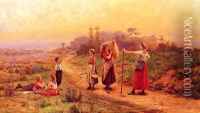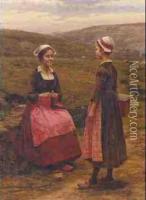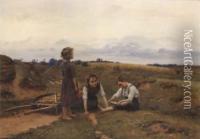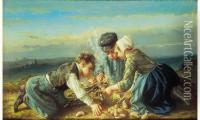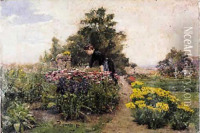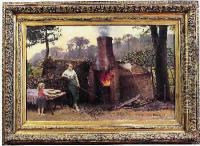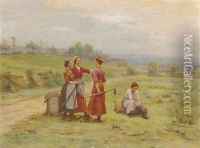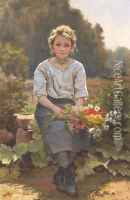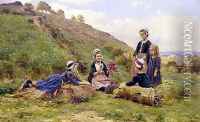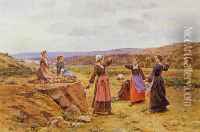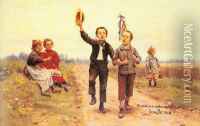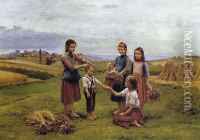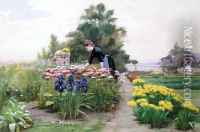Cesar Pattein Paintings
Cesar Pattein was a French artist born on October 16, 1850, in Hazebrouck, France. He was known for his genre paintings, which often depicted scenes of rural and domestic life in France during the late 19th and early 20th centuries. Pattein's work is characterized by its detailed representation of daily life, the use of light, and a rich palette that contributed to the warm and inviting atmosphere of his compositions.
Pattein received his artistic training at the École des Beaux-Arts in Lille, where he was a student of Alphonse Colas and subsequently continued his studies in Paris. He was influenced by the French realist and naturalist movements, which is evident in his attention to detail and his focus on the lives of ordinary people.
Throughout his career, Pattein exhibited his works at various salons, including the Salon des Artistes Français in Paris, where he received several awards for his paintings. His works were well received, and he gained a reputation for his charming and sentimental portrayal of country life.
Pattein's paintings often feature peasants and farmers, engaging in everyday activities such as harvesting, sewing, and gathering. He was adept at capturing the nuances of rural existence, from the texture of the clothing to the expressions of his subjects. His art serves as a historical record of the lifestyle and customs of rural France during his lifetime.
Although not as widely known today as some of his contemporaries, Cesar Pattein's work is appreciated by art historians and collectors for its contribution to genre painting and its depiction of 19th-century French countryside life. He passed away on November 10, 1931, in Saint-Josse, France, leaving behind a body of work that continues to evoke nostalgia for the pastoral past.
